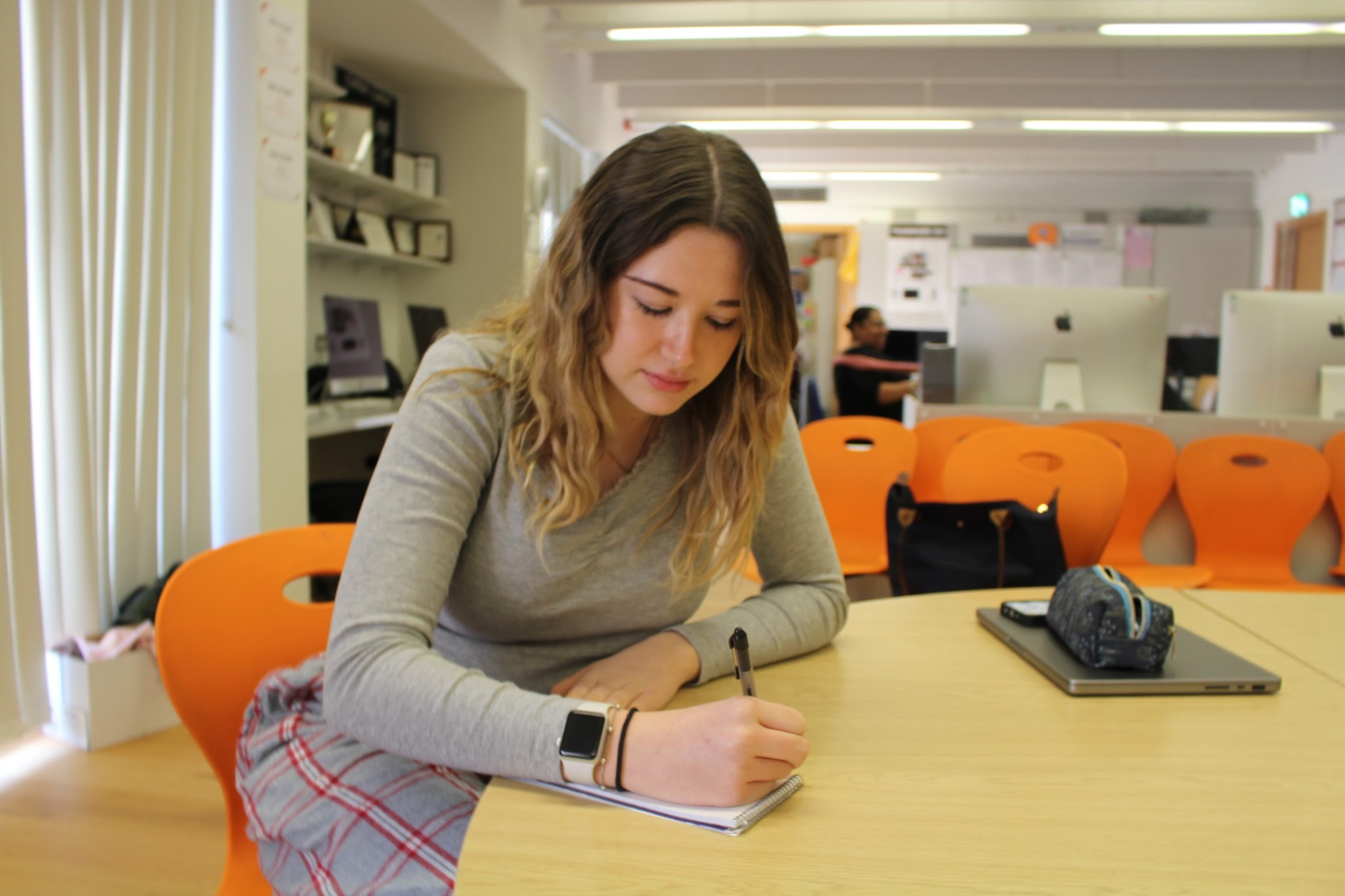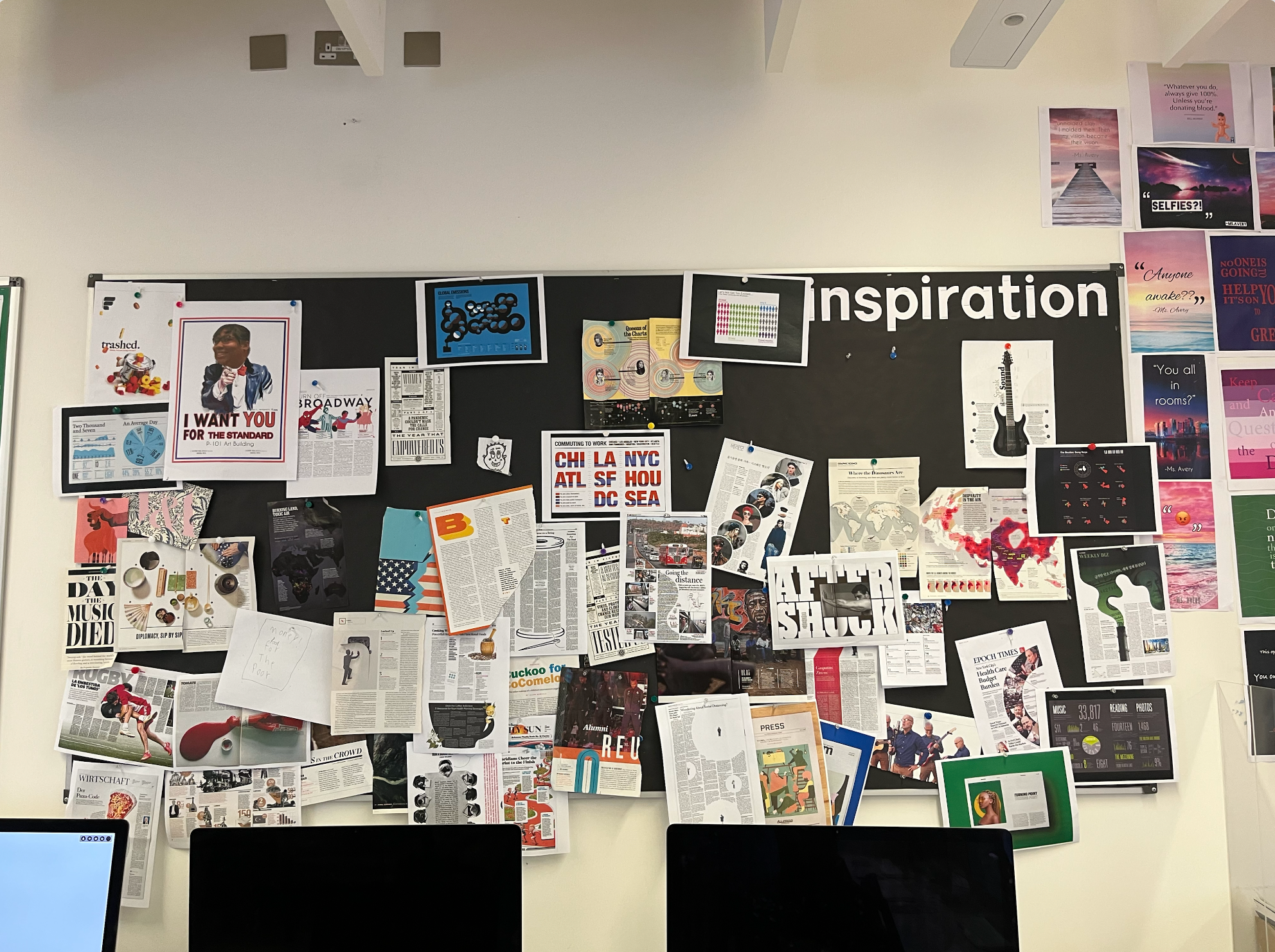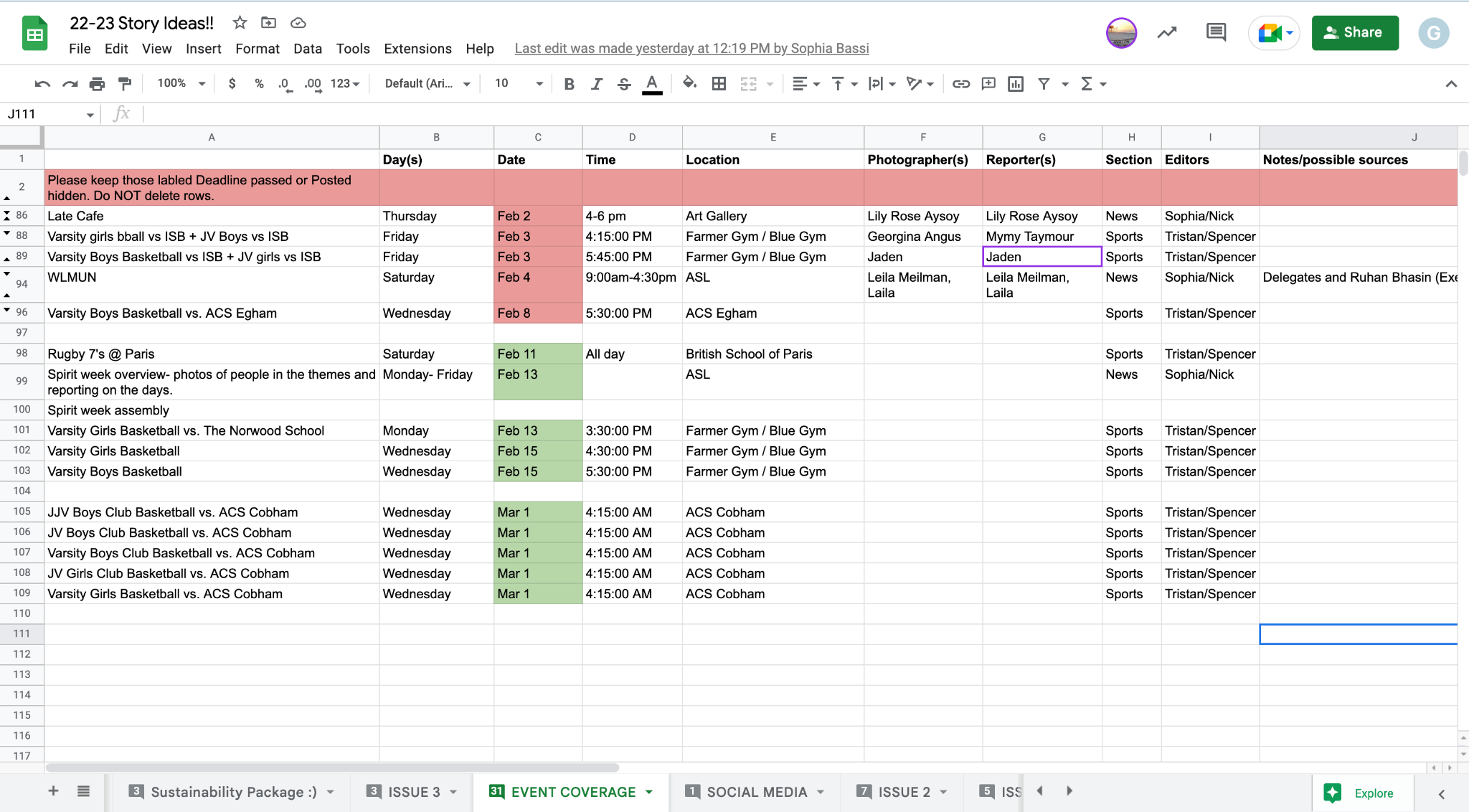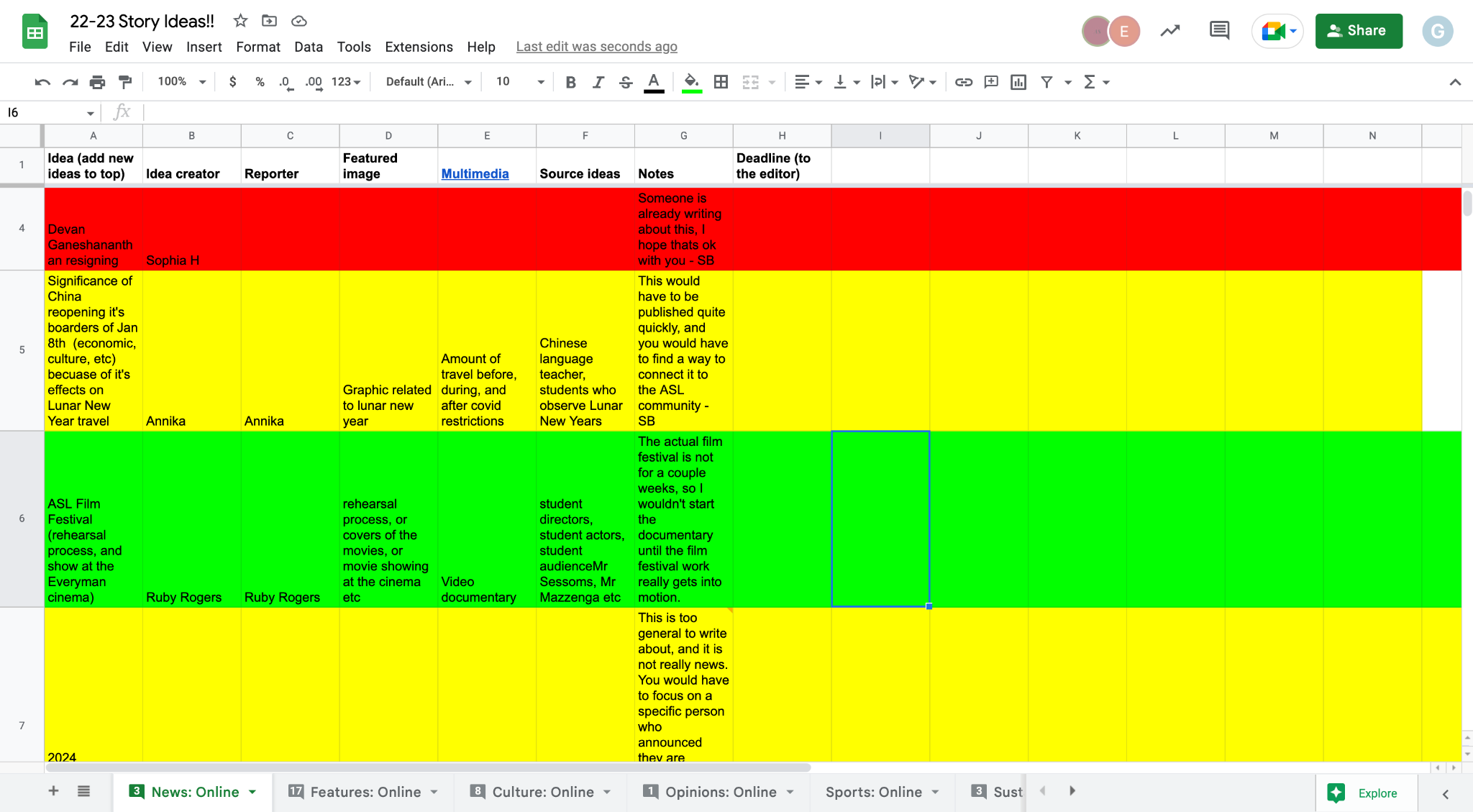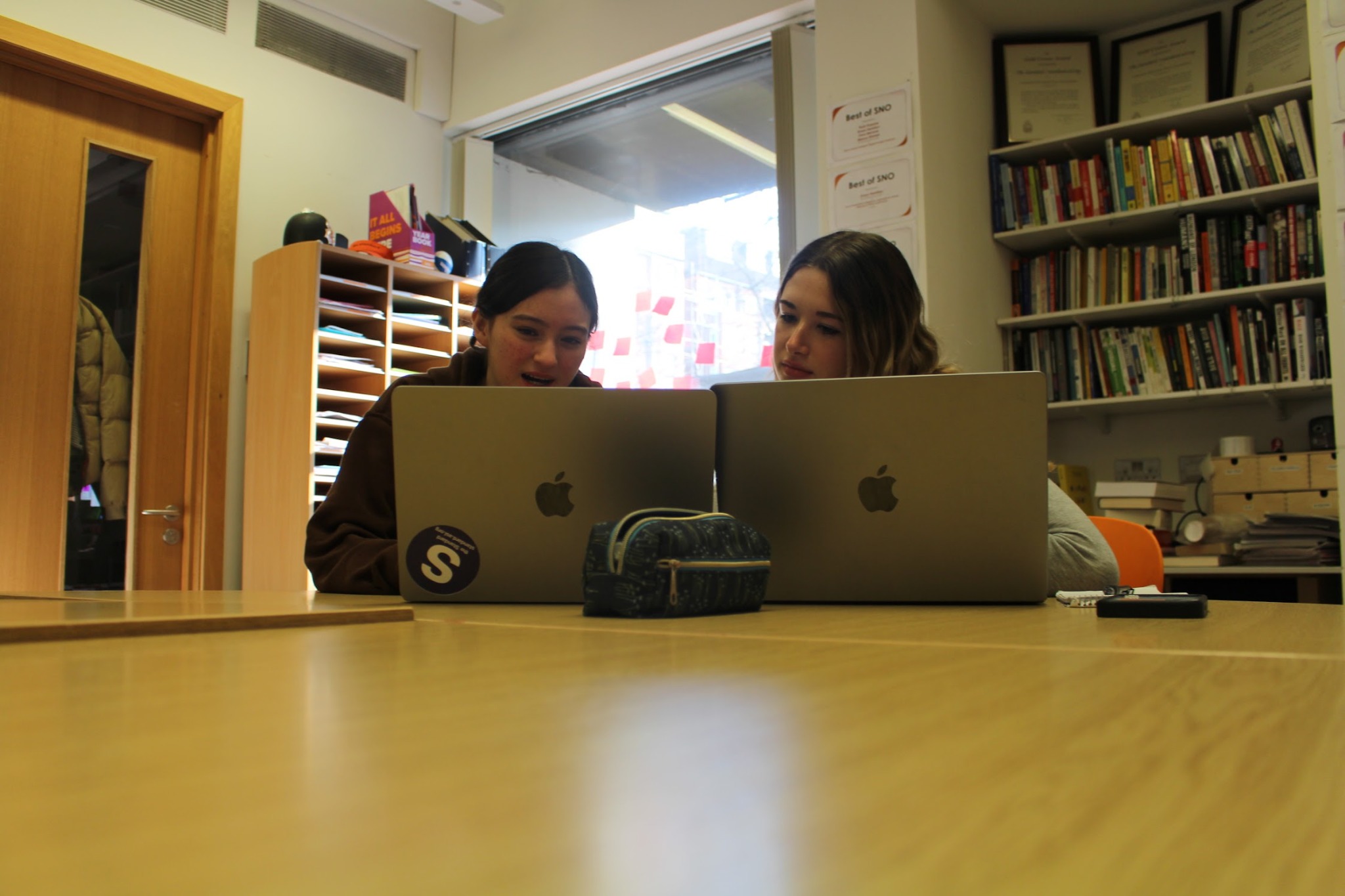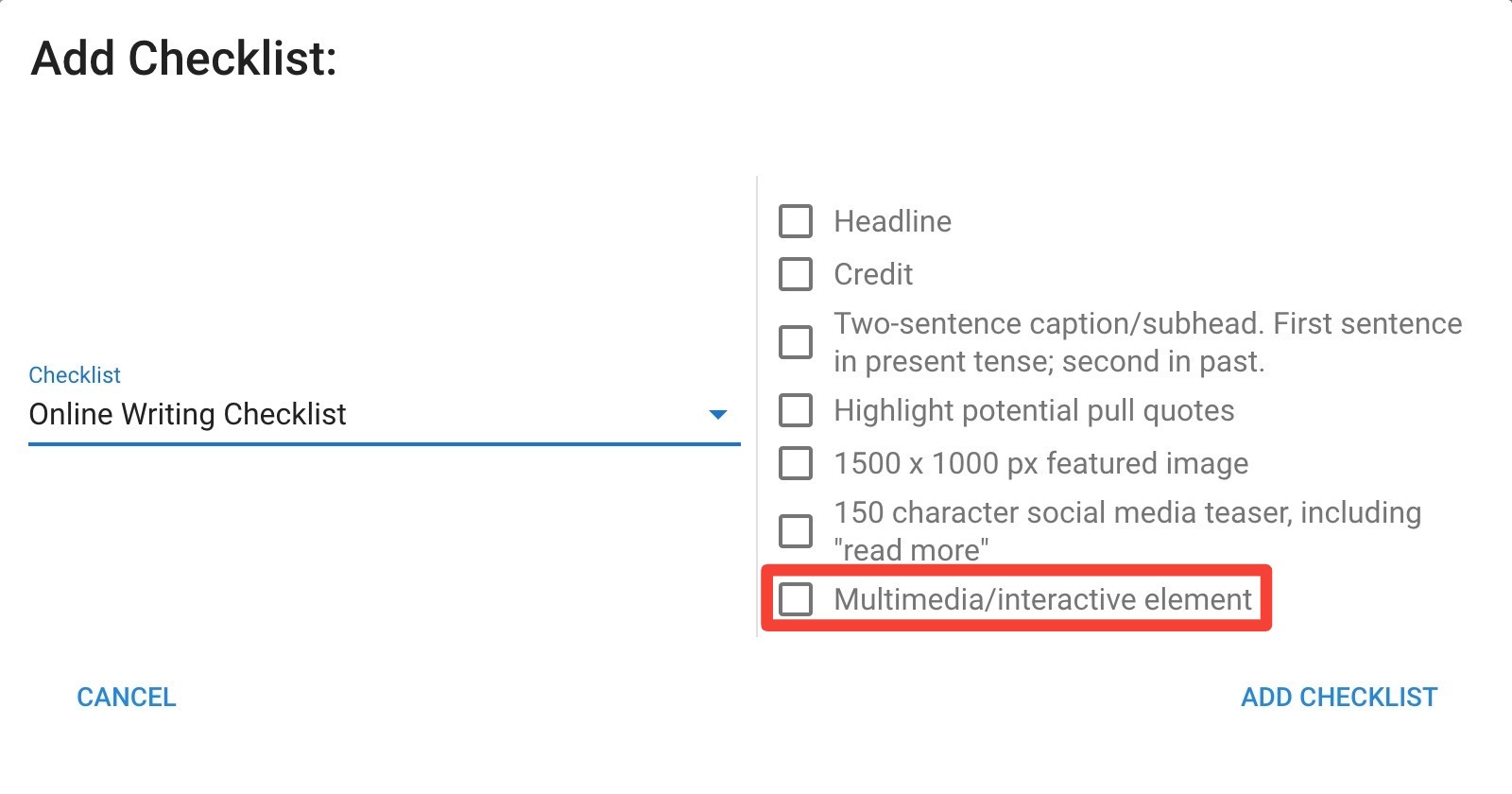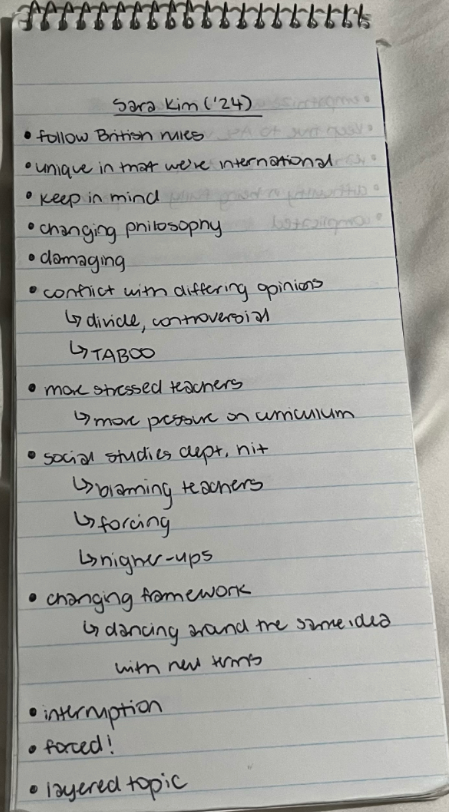

Reporting is the foundation of journalism. From the drafting of interview questions to background research to quick hand, reporting is key. My philosophy is that reporting should be approached holistically, with reporters considering the entirety of their story – photography, multimedia, article structure – right when the story idea is first generated.
Monthly, I have the staff sit down and peruse news sources together – both student and professional publications – and gather inspiration to share aloud as a group. In the newsroom, we have also created an inspiration board, on which we tape exemplar print designs or notable stories from other publications. At the beginning of the year, I allocated class time to sourcing inspiration and decorating the board. Every staff member is welcome to add inspiration to this board throughout the year.
In addition to the inspiration board in our own newsroom, I also encourage staffers to look for inspiration in other student publications and professional papers. Thus, I created an inspiration document to get the wheels turning:
As journalists, it’s our job to remain informed. Reporters play news tag every class at the beginning of the week, which not only ensures the staff is well-versed on current events that could spark ideas around coverage but also gives space to practice note-taking skills.
It is equally important for the staff to keep an ear to the ground on campus. I continually make reminders about campus announcements and events. For social media posts in particular, I help facilitate this content on our story ideas spreadsheet under “Events Coverage” to ensure we cover campus developments just as much as we localize social conversations and global events.
All of the story ideas we generate can be found on a collective spreadsheet, which I oversee and facilitate. To enable efficient organization, we use a color-coded system where red indicates a story idea that cannot be reported, yellow indicates an editor has a question for the reporter and green indicates the reporter can get started on their idea. Editors review the sheet constantly and provide reasoning for the color they assign in the "Notes" column. This way, reporters understand what ideas are worthy of coverage, how their angles might be improved and what next steps should be taken.
I have identified sourcing as a priority this year. In our reporting, we strive to include sources with unique, localized and diverse perspectives. Generally, I have established the rule that every article must contain sources of different genders, grade levels and at least one person of color. Most importantly, the voices we platform must contain a proportional representation of our community. To avoid continually using the same sources in our coverage, I have created a “Rainbow List” with individuals whom we frequently use that cannot be interviewed.
To help new reporters to my staff understand the practice of interviewing, I created a comprehensive interview guide:
Guiding reporters in this process early on is crucial. Thus, I spend many of my free periods going over interview questions and general interview technique with reporters.
When I request an interview myself, initial contact is key. Every email or in-person request includes the story idea I am executing and why I am requesting an interview with them. For example, when reporting on sexual harassment, I sent an email explicitly outlining my goals for the interview:
Conducting background research is a massive component of the interviewing process as well. Before the interview, I always take time to thoroughly explore the person or topic to ensure my questions are well-informed and generate colorful quotes. For example, when reporting on the presence of the ChatGPT software in my community, I spent time before my interviews familiarizing myself with the program and reading articles on its inner workings to ask more informed questions.
When preparing questions, I ensure that they remain open-ended and do not lead the source to answer a particular way. I guide writers in doing the same, asking questions that enable their source to state their true opinion without influence from the journalist. For example, when guiding two reporters on their work writing a story about sexual harassment, I commented on one of their questions and explained why it was leading:
Within the interview itself, my reporter’s notebook is my best friend. Using a notebook during the interview shows sources I care about their perspective and allows me to pinpoint particular quotes I want to be sure to use in my article. Not only do I love the freedom of pen and paper, but in my experience, sources typically feel more comfortable when the reporter is writing in a notebook rather than with their laptop. Technology can often create unnecessary barriers, and the interview is an environment in which both parties need to feel comfortable engaging.

Each story I write is localized to my community. Because we play a unique role as a student publication, we must reflect this fact in our coverage by ensuring that no other publication could curate the same content. Thus, when I cover national or global issues, I find sources in my community that can speak to the issue and its personal impact or its direct impact on our community.
For example, when writing an article on the worsening of COVID-19 in India, I sought out individuals who had family members in India and had been personally affected in some way.
Multimedia is incredibly important in the reporting process. From the get-go, reporters are required to list what multimedia they plan to use in the story they’re covering. To give a foundation for inspiration, I created a staff guide for reporters to reference:
To ensure that reporters include this multimedia in every piece published, I added it to our online posting checklist on Flow. Lead editors must check the box off before passing on an article to the managing team.
In my own reporting, every article has some form of multimedia. A few examples are below. Click the image to view a reflection for each:

Section lists – in which the lead editor of each section organizes each article with its status, design idea and editing process – are crucial to ensure our managing editors are in the loop on articles in a given section and their status throughout the reporting process. At the beginning of the year, I sat the team down and explained each element of the section list and how lead editors should go about updating it weekly. I heavily rely on section lists to monitor reporting progress.
At the beginning of my time as Editor-in-Chief, I created a section list guide for all sections to follow. This guide was based on my own section list and how I organized content as Lead Culture Editor.
